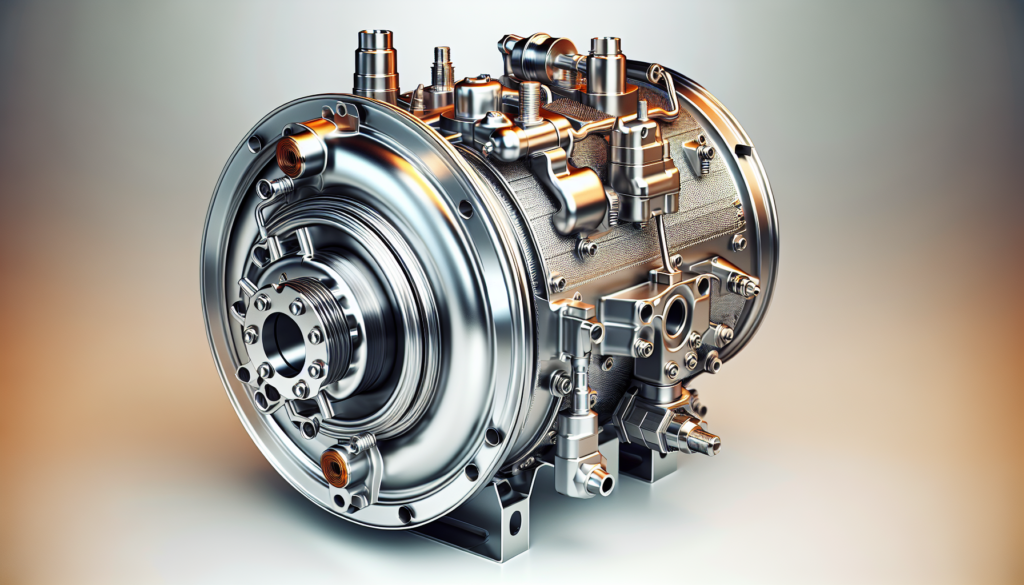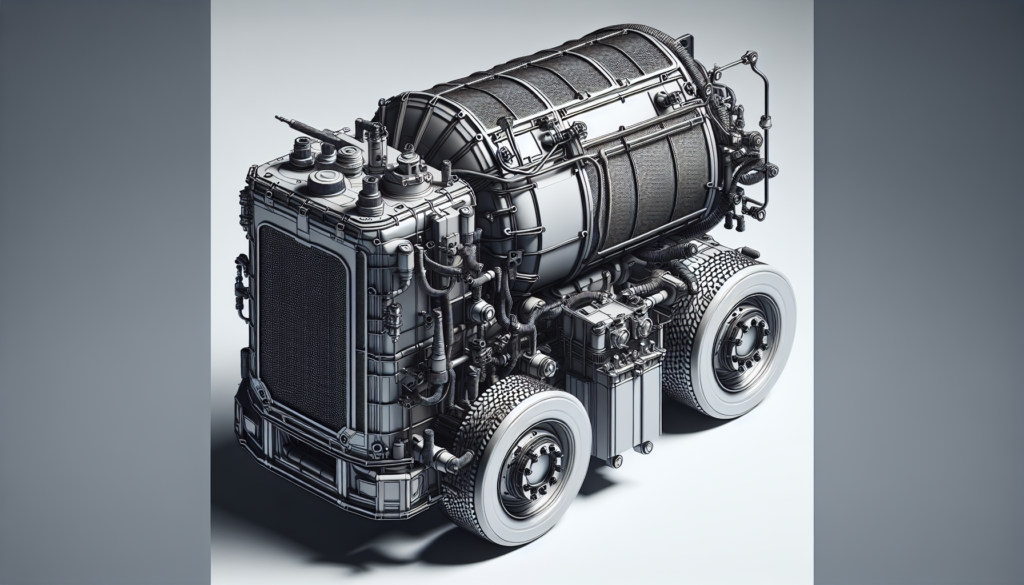Understanding the optimal time to replace the receiver-drier in a big rig A/C can save you a considerable amount of time and money by preventing complications down the road. This discussion will offer valuable insights into recognizing early signals of malfunctioning, and the critical role the receiver-drier plays in any large vehicle’s A/C units. From nuanced changes to indicator signals, it is essential to keep a wary eye on your receiver-drier as it facilitates efficient cooling, thereby maintaining your truck’s operational efficiency.

Understanding The Role of Receiver-drier in Big Rig A/C
Deciphering Abnormal Symptoms in A/C System
-
Abnormal Symptoms Could Manifest in Different Ways
Diminished airflow from the A/C vents or warmer air than usual can indicate a problem. If the A/C isn’t cooling the cab of your big rig effectively, the receiver-drier could be a potential issue.
-
Recognizing Unusual Noises
Pay attention to unusual sounds from your A/C system. Hissing or bubbling noises may suggest a problem with the receiver-drier, such as a refrigerant leak or blockage.
-
Listing Decreased Cooling Performance
A decrease in cooling performance is a common sign of a failing receiver-drier. If the A/C takes longer to cool the cab or doesn’t reach the desired coolness, it might be due to the drier’s inability to filter the refrigerant or absorb moisture effectively.
-
Identifying Leaks or Blockages
Leaks or blockages in the A/C system, whether minor or significant, can also indicate a malfunctioning receiver-drier. Significant blockages can obstruct refrigerant flow, potentially leading to system failure.
Overview of Receiver-drier Replacement Need
The receiver-drier in a big rig’s A/C system, like any other component, has a lifespan and may need replacement for several reasons. Understanding when and why to replace it is crucial for maintaining the efficiency and longevity of your air conditioning system. Here are some key considerations:
- End of Lifespan: The receiver-drier is not designed to last indefinitely. Over time, the desiccant inside can become saturated, losing its ability to absorb moisture effectively. This is often a function of time and usage, and manufacturers typically recommend a replacement interval.
- After A/C System Repairs: It’s generally advisable to replace the receiver-drier whenever the A/C system is opened up for major repairs, such as after a compressor failure. When the system is exposed, moisture and contaminants can enter, potentially compromising the desiccant’s effectiveness.
- Signs of Failure: If you’re experiencing symptoms like reduced cooling efficiency, unusual noises, or visible leaks, it might be time to consider replacing the receiver-drier. These symptoms often indicate that the drier is no longer performing its critical functions effectively.
- Preventative Maintenance: Proactively replacing the receiver-drier as part of regular maintenance can prevent more significant problems down the road. This is especially important in big rigs where the A/C system is essential for driver comfort and safety.
- Quality of Replacement Parts: When replacing the receiver-drier, it’s important to use high-quality parts that meet or exceed OEM specifications. Cheaper alternatives might not provide the same level of performance or durability, leading to more frequent replacements.
How often should a Receiver-drier be replaced?
Typically, a receiver-drier should be replaced every 2-3 years or whenever the A/C system is opened for service. This is important because whenever the system is opened, moisture can enter which can saturate the desiccant, reducing its effectiveness.
Link between Receiver-drier lifespan and A/C performance
A properly functioning receiver-drier does wonders for the lifespan and performance of your A/C system. Over time, a neglected receiver-drier could cause significant damage to other components in the A/C system, leading to expensive repairs.
Dangers Associated with Delayed Replacement
Postponing the replacement of a faulty receiver-drier is a recipe for disaster. Here are some reasons why:
Consequences of postponed replacement
Delaying receiver-drier replacement can lead to several issues. As mentioned earlier, a bad drier can allow moisture to stay in the system. This moisture can cause corrosion or freezing in the system, leading to more substantial damage and costlier repairs.
Cost implications of delayed maintenance
The cost to replace a receiver-drier is significantly less than the cost to repair or replace an A/C compressor or other components. In this context, delayed maintenance is not cost-effective in the long haul.
Impact on the overall A/C system performance
A failed receiver-drier affects the overall performance of the A/C system. This could lead to a less comfortable cab environment due to poor or inadequate cooling.

This image is property of images.pexels.com.
Comprehending the Receiver-drier Replacement Process
Understanding the replacement process will help you make an informed decision about your next steps.
Assessing the right time for replacement
As previously explained, typically a receiver-drier should be replaced every 2-3 years or when the A/C system is opened for servicing. Nonetheless, always consult your vehicle’s manufacturer guidelines or a professional technician to ascertain the right time for replacement.
Understanding the steps involved in replacement
Receiver-drier replacement follows a certain protocol. Your technician will first recover the refrigerant from the system, then disconnect the receiver-drier, install a new one, and finally recharge the system with refrigerant. Bear in mind that servicing an A/C system involves high pressures and refrigerants, thus, it’s a task best left to skilled professionals.
Required tools and materials
Certain specialized tools and materials are required for this job including an A/C gauge set, refrigerant recovery machine, refrigerant and, of course, the new receiver-drier. A torque wrench is also needed to ensure the receiver-drier is installed to the correct tightness.
Estimating the Cost of Receiver-drier Replacement
Knowing the cost estimate can help plan for the replacement.
Factors affecting replacement cost
The cost for a receiver-drier replacement varies due to several factors. These can include the make and model of your big rig, part costs, labor rates, and where you’re getting the job done.
Comparing price estimates
It’s always wise to shop around and compare price estimates. While doing so, ensure that you are comparing like for like, i.e. costs of good quality parts and labor at reputable service centers.

This image is property of images.pexels.com.
Possible DIY Solution for Receiver-drier Replacement
While many prefer to leave this task to a professional, some mechanically-inclined individuals might opt for a DIY approach. Here’s what you should know.
Assessing the feasibility of a DIY approach
While replacing a receiver-drier may sound like a simple replacement task, bear in mind that it involves handling refrigerant, which can be hazardous. Unless you are skilled and have the required tools, it may be best to leave this one to trained technicians.
Tips and advice for DIY replacement
If you decide to go the DIY route, keep safety in mind. Wear safety glasses and gloves and follow the guidelines specified in the repair manual of your vehicle meticulously. Moreover, using high-quality parts and appropriate tools will lead to a more successful replacement job.
Avoiding common mistakes
Common mistakes during a DIY approach include over-torquing the receiver-drier and not pulling a vacuum before recharging the refrigerant. Avoid these by always referring to the correct torque specification and following the correct vacuum and recharge process.
Finding a Proficient Technician for Receiver-drier Replacement
Identifying a skilled technician can be a challenge but keep the following advice in mind.
What to look for in a proficient technician?
A professional technician should be experienced, certified, and capable of performing A/C repairs and replacements. They should also be capable of explaining the issues in simple terms and recommend appropriate solutions.
Questions to ask your technician
Ask specifics about their experience with A/C system repairs, their certifications, and also their process for receiver-drier replacement. Always understand the scope of the job before agreeing to the service.
Ensuring quality service
Ensure that the technician uses quality parts and performs a system check after the replacement to verify the A/C system is operating correctly.

Preventative Measures to Prolong Lifestyle of Receiver-drier
Adopting preventative measures can help prolong the lifespan of your Receiver-drier.
Routine inspection and maintenance
Periodically checking your A/C system for any leaks or irregularities can be beneficial. Also, consider having a professional inspect the system every couple of years to detect potential issues.
Effective A/C system usage
Proper usage of your A/C system can also extend the lifespan of its components. For instance, running the A/C system periodically, even in cool weather, helps to circulate the refrigerant which keeps the seals soft and prevents them from drying out.
Taking precautions during extreme weather conditions
Taking precautions during extreme weather conditions like operating the A/C system at lower settings or parking the vehicle in the shade can prevent overstressing the A/C system thereby maximizing the lifespan of the receiver-drier.
Addressing Common Misconceptions about Receiver-drier Replacement
With so much information floating around, it’s bound to be some misconceptions.
Dispelling misconceptions about replacement need
One common misconception is that the receiver-drier need not be replaced if the A/C system is still functioning. This isn’t necessarily accurate as a failing receiver-drier might not immediately affect the overall system, but neglecting it could lead to more costly repairs down the line.
Setting the record straight on A/C system myths
Some people might believe that adding extra refrigerant will overcome poor A/C performance. But overcharging the system could lead to more harm than good, as it can put unnecessary stress on the A/C components.
Understanding the facts vs fiction of Receiver-drier Replacement
Understanding the facts about the receiver-drier replacement is crucial for maintaining the optimum performance of your big rig’s A/C system. Always consult with a professional and adhere to your vehicle’s manufacturer guidelines regarding A/C system maintenance and service. Remember, the health of your A/C system is integral to the comfort and functionality of your big rig, and the receiver-drier is a central component of that system.
